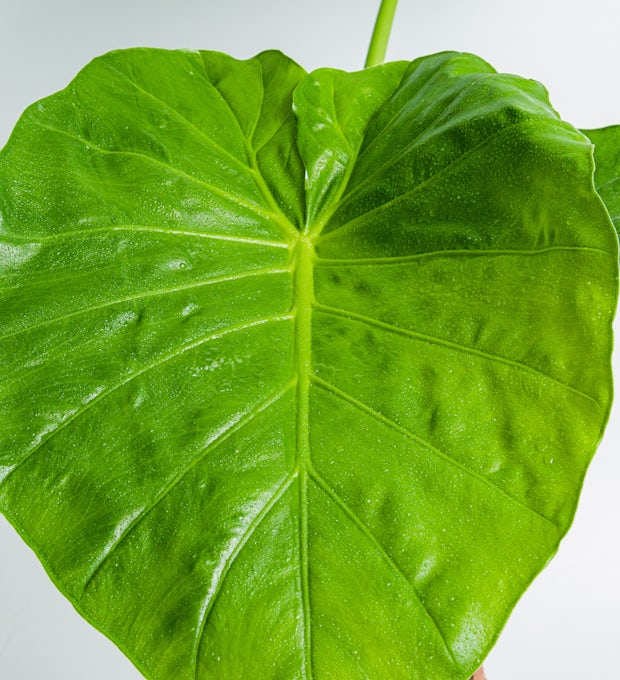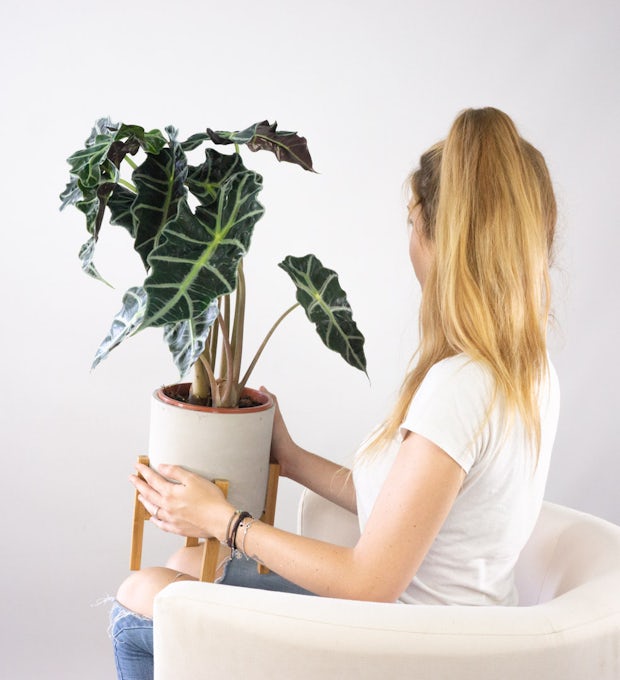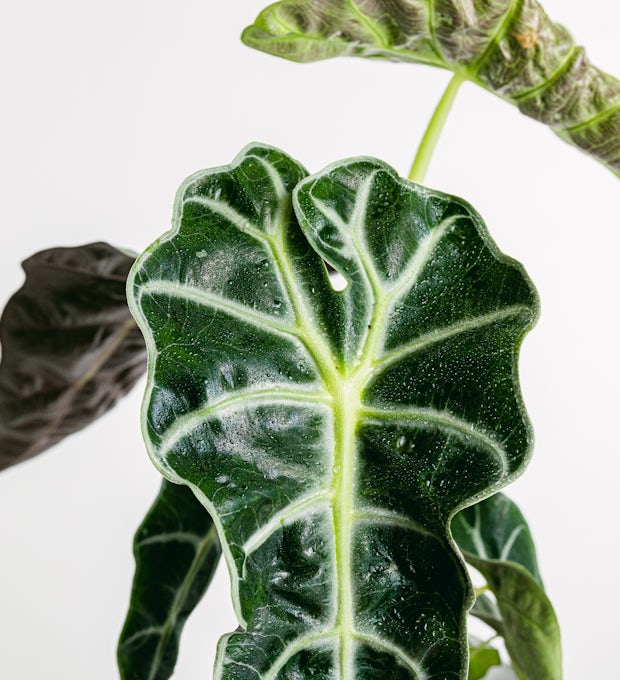Looking to add some exotic vibes to your indoor oasis? Well, let me introduce you to the African Mask Plant, also known as Alocasia.
With its lush green leaves and striking veins, this beauty is sure to steal the show in any space.
In my article, African Mask Plant: The Secrets to Thriving, Ill spill all the tea on how to care for this unique plant.
Get ready to unlock the secrets to successfully cultivating and nurturing this stunning plant. Lets dive in!
The African mask plant, also known as Alocasia amazonica or Alocasia polly, is a stunning tropical plant known for its unique foliage that resembles an African mask. This plant is gaining popularity as an indoor houseplant due to its exotic look. However, caring for an African mask plant can be tricky. This comprehensive guide provides tips and tricks for successfully growing a healthy African mask plant indoors.
Native to the rainforests of Asia and Eastern Australia, the African mask plant thrives in warm, humid environments. Although they can reach towering heights of 4-6 feet in their natural habitat, a well-cared for African mask plant can grow up to 2 feet indoors. With its large, arrowhead-shaped green leaves featuring prominent white veins, it’s easy to see why this plant is so sought-after. But don’t let its captivating beauty fool you – this diva requires very specific care. Follow these tips to keep your Alocasia happy and healthy.
Light
African mask plants need bright, indirect light to mimic their natural rainforest environment. Place them near an east or west-facing window where they’ll receive 3-6 hours of gentle sunlight filtered through sheer curtains. Direct hot sun will scorch their leaves. Rotate the plant periodically so all sides get even light exposure. In winter when light levels are lower, supplemental grow lights may be needed.
Water
Getting the watering schedule right is crucial for African mask plant health. They prefer consistently moist (but not soggy) soil. Allow the top 1-2 inches of soil to dry out between waterings. Water thoroughly until it drains from the drainage holes at the bottom then empty any water that collects in the saucer so the roots don’t sit in water. Yellow leaves often indicate over or under-watering.
Humidity
High humidity is a must for lush African mask plant growth. Mimic their native tropical climate by placing their pots on pebble trays misting the leaves daily, or using a humidifier. 40-60% humidity is ideal. Signs that humidity is too low include dried out leaf tips and margins.
Temperature
Warm temperatures between 60-80°F are preferred. Avoid drafty areas and keep away from air vents where cold air blows directly on the plant. Temperatures below 55°F can damage leaves.
Soil
A well-aerated, organically rich potting mix provides the drainage African mask plants need. A good soil recipe is 1 part peat moss, 1 part perlite or coarse sand, and 1 part compost or worm castings. Adding a handful of orchid bark further improves drainage. Re-pot every 2 years in spring, moving up just 1 pot size each time.
Fertilizer
Feed African mask plants monthly during spring and summer with a balanced liquid fertilizer diluted to half strength. Fertilize every 6-8 weeks in fall and winter. Slow release pellets can be incorporated into the soil at planting time for continuous nutrients.
Pruning
Remove any dried out, yellowed, or damaged leaves and stems to keep your African mask plant looking its best. Sterilized pruning shears should be used to prevent disease transmission. Wipe the blades with alcohol between each cut. Avoid over-pruning, only remove what’s necessary.
Propagation
African mask plants can be propagated by dividing rhizomes when re-potting. Make sure each division has some roots and a growth node attached. They can also be started from stem cuttings taken in spring or summer. Place cuttings in water or moist potting mix until roots develop.
Common Issues
Overwatering leads to root rot, evidenced by yellow droopy leaves and stunted growth. Underwatering causes crispy brown leaf edges and droppy foliage. Pests like spider mites, mealybugs and scales can infest leaves. Always isolate new plants, and treat infestations early by wiping with alcohol.
Pet Safety
African mask plants contain insoluble calcium oxalates that can cause oral irritation, drooling and vomiting if eaten. Keep away from pets and small children.
With high humidity, bright indirect light, warm temps and consistently moist soil, the African mask plant can thrive as an indoor plant. Pay close attention to its needs, keep leaves dust-free, provide adequate airflow, and address any issues promptly. With proper care, you’ll be rewarded with a stunning tropical accent plant for your home.

African Mask Plant Traits
As a plant enthusiast, Ive come to appreciate the unique traits of the African Mask Plant. Native to the tropical rainforests of Southeast Asia, this plant thrives in its natural habitat of warm, humid environments.
With its striking growth patterns, the African Mask Plant can grow tall and spread out, becoming a low, wide floor plant. Alocasia Polly, a popular variety of the African Mask Plant, reaches a maximum size of 2 x 2 feet, while other Alocasias can grow as tall as 4-6 feet. These plants have a moderate growth rate, especially during the spring and summer months.
The deep green leaves with pronounced veins are a distinguishing feature of this plant, adding to its overall appeal.
African Mask Plant Care
When caring for the African Mask Plant, its important to provide the right conditions and maintenance to ensure its optimal growth and health. Here are three key aspects to consider:




- Watering schedule: The African Mask Plant prefers to be kept consistently moist, but not soggy. In warmer months, water the plant every six to seven days, and adjust the frequency during its semi-dormant phase in fall or winter. Factors like pot size, soil type, location, and home environment can affect the watering needs, so its important to monitor the moisture level of the soil.
- Humidity requirements: Moderate to high humidity is crucial for the African Mask Plant. While the average houseplant enjoys around 50% humidity, this plant may suffer in areas with low humidity, like Tucson where it can be as low as 12%. Increase humidity by using saucers with water, misting the plant, using humidifiers, or using a humidity meter. Avoid letting the roots sit in water to prevent root rot.
- Soil mix: The African Mask Plant thrives in a well-draining soil mix. A recommended recipe is a combination of 1/3 coco chips, 1/3 pumice (perlite is fine too), and 1/3 potting soil. Adding charcoal can improve drainage, and incorporating organic compost when planting provides additional nutrients. Top dressing with worm compost and compost can also be beneficial.
Mastering Alocasia Care – Tips and Tricks
FAQ
Do African mask plants like to be misted?
Why are the leaves on my African mask plant turning brown?
How do you grow healthy Alocasia?
